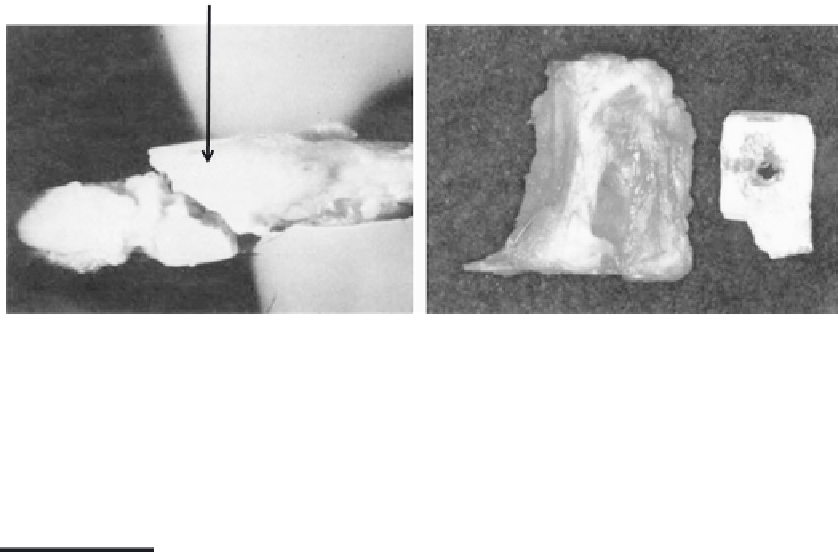Biomedical Engineering Reference
In-Depth Information
Implanted 45S5
(a)
(b)
B
A/W
BGC
A/W
B
BGC
B
Bone / 45S5
Interface
FIGURE 9.9
Example of in vivo interfacial adherence of host bone with (a) 45S5 composition implant and (b) A/W glass-
ceramic implant. (From Hench, L.L.,
J. Am. Ceramic. Soc.
, 74(7), 1487-1510, 1991. With permission [24].)
BioactiveGlassCoatingsonLoad-BearingImplants
Load-bearing metallic prosthesis (e.g., total joint replacement devices) fail due to the rea-
sons stated in Table 9.17.
Strategies for Improved Tissue Attachment
The most common load-bearing implants are total joint replacements of the knee and hip.
Composed of either a stainless-steel or titanium alloy femoral stem with a separate articu-
lating surface, these joints need to be mechanically anchored to the host tissue site. After
25 years postimplantation, 24% of cases require secondary surgery due to causes stated
in Table 9.17. Biological reactions at the implant/host tissue interface can result in implant
encapsulation by fibrous tissue resulting in no direct bonding with host bone tissue. Surgical
techniques to fixate implants such as cementation can be sources of wear debris triggering
local inflammatory responses reducing implant lifetime. Strategies to encourage direct bone
ingrowth in the implant surface have been explored where the bioactivity of metallic sur-
faces is improved with the aim of minimizing the creation of wear debris and eliminating
interfacial micromotion between the implant and host tissue site.
Research has focused on improving implant lifetimes via promoting faster and pro-
longed tissue growth into the implants surface, resulting in direct mechanical interlocking
of the implant with host tissues. Where there is direct apposition of bone on the implant
surface without intervening collagen membrane formation, osteointegration is described
to have occurred (i.e., new bone has ingrown and formed within/into microscopic sur-
face features on the implant's surface—e.g., pores and groves). Stability of the newly
ingrown bone tissue is an issue because after the initial healing phase, a border zone is
usually created in response to the implant's functional loading. During implant failure,




Search WWH ::

Custom Search